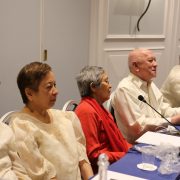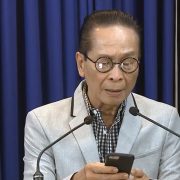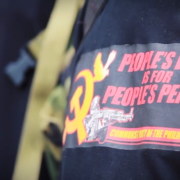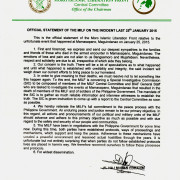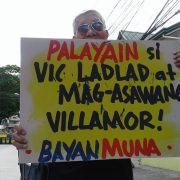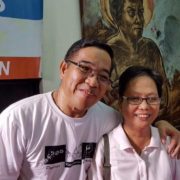GRP completes panel lineup
MANILA—The Government of the Republic of the Philippines (GRP) has completed its peace panel in time for the anticipated resumption for formal talks with the National Democratic Front of the Philippines (NDFP) later this month, its chief negotiator in an interview said.
GRP negotiating panel chief and Department of Labor and Employment Secretary Silvestre Bello said they have completed their negotiating team with the addition of two lawyers who will represent marginalized sectors.
“Now we have Atty. Angela Librado, who will represent the women sector, and Atty. Noel Felongco who will represent the indigenous peoples,” Bello said.
Librado and Felongco will join Bello, former congressman Hernani Braganza and former Commission on Elections commissioner Rene Sarmiento at the resumption of formal peace negotiations with the NDFP in Oslo, Norway either on July 27 or some time in August.
Librado, incumbent Barangay Matina chairperson and former Davao City councilor, is a known women’s rights advocate.
Felongco is from Cagayan de Oro City and, according to Bello, is an anti-irresponsible mining advocate.
Bello also announced the appointment of former GRP peace panel member Atty. Efren Moncupa as head of their reciprocal working committee on socio-economic reforms as well as Ateneo de Manila University School of Law dean Sedfrey Candelaria as head of their technical working committee on political and constitutional reforms.
Bello said the GRP has yet to appoint someone to their technical working committee on end of hostilities and disposition of forces, although he already consulted Department of National Defense Secretary Delfin Lorenzana and National Security Advisor Hermogenes Esperon Jr.
“They (Lorenzana and Esperon) have already submitted some names who will head this committee in behalf of the GRP peace panel. Or it could even be Sec. Esperon himself,” Bello said.
Bello described their panel as apolitical, saying Braganza was from the Benigno Aquino administration and is closely identified with defeated presidential candidate Manuel Roxas while Sarmiento is also closely identified with former President Arroyo as a member of her peace panel.
“It appears the President (Duterte) decided to harness all the so-called institutional memories of those involved in the peace process to accelerate the process,” Bello said.
Welcome additions
NDFP chief political consultant Jose Maria Sison welcomed the completion of the GRP peace panel, saying he thinks they are a reasonable lot.
“Congratulations to them…We negotiated with most of them before, with positive results, especially in the making of formal agreements,” Sison said.
Bello, Braganza and Sarmiento have been members of GRP peace panels under the Fidel V. Ramos and Gloria Macapagal-Arroyo administrations that have signed at least 10 major agreements and statements with the NDFP, including the Joint Agreement on Safety and Immunity Guarantees (JASIG) and the Comprehensive Agreement on Respect for Human Rights and International Humanitarian Law.
Presidential Adviser on the Peace Process chairperson Jesus Dureza, who will oversee the Duterte administration’s forthcoming peace negotiations with rebel groups, has also signed major written agreements between the Ramos government and the NDFP either as advisor or witness.
The NDFP for its part will still be represented by its chief negotiator Luis Jalandoni and veteran panel members Coni Ledesma, Fidel Agcaoili, and Juliet de Lima.
They are hoping to be joined by long-time consultant and JASIG-holder Allan Jazmines who has been in detention since his arrest by the Armed Forces of the Philippines in 2011 mere hours before the start of formal talks between the NDFP and the Aquino government.
Sison also agreed with Bello about the goodwill and confidence generated by GRP President Rodrigo Duterte and the continuing cordiality of both sides of the negotiations.
“After all, we are striving to do our best for the benefit of the Filipino people,” Sison said.
See: Bello on moving talks forward (video)
No longer ‘GPH’
Meanwhile, Bello said he is more accustomed to using the acronym GRP, which stands for the Government of the Republic of the Philippines, instead of GPH, which stands for the Government of the Philippines, adopted by the Aquino government in 2011.
“I’m used to it (GRP); it’s been like that before,” Bello said.
He added it would be more convenient to revert to using ‘GRP’ since 10 agreements have been signed under the acronym.
“I agree with Bebot (Silvestre’s nickname) Bello that we ought to resume using GRP in order to be consistent with its use in the previous agreements,” Sison, for his part, said.
Aside from the Oslo Joint Statement of February 2011, no agreement has been signed under the name Government of the Philippines and its acronym GPH. # (By Raymund B. Villanueva. Featured photo courtesy of Hernani Braganza)


